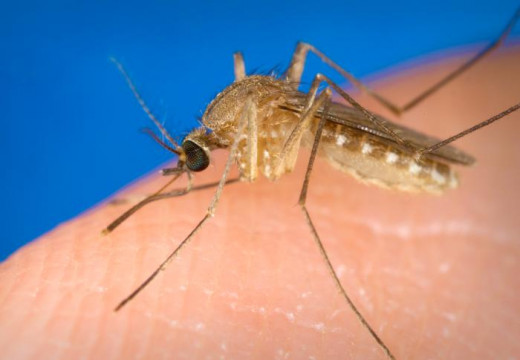Japanese Encephalitis: Health Significance, Epidemiology, Pathogenesis And Pathology
A Pediatric Patient Affected With Japanese Encephalitis

Infectious Diseases
A General Overview Of Japanese Encephalitis
Previously known as Japanese B encephalitis, this disease is now called Japanese encephalitis (JE). It was first identified as a definite entity when it broke out as an epidemic in Japan in 1924. Several outbreaks have been reported, especially in India. The conditions required for perpetuation and propagation of the virus are constantly present under Indian conditions. This disease, therefore, has assumed great public health importance. The causative agent is an RNA virus belonging to group B arbovirus (flavi virus).
Epidemiology: The disease is widespread. Outbreaks have occurred in several countries including Japan, Philippines, Borneo, China, Russia, Korea, Taiwan, Indonesia, Singapore, Vietnam, Bangladesh, Sri Lanka and India. Surverys doen by the national institute of virology in India suggests that the flaviviruses are widely distributed in India. Neutralising antibodies to JE virus were demonstrated in all regions which had epidermics. In north and north-east India, the disease occurs more during the summer monsoons, whereas the maximum incidence in the south is from September to January. The outbreaks coincide with the density of the mosquito population. Children below 15 years suffer more. Poverty and unhygienic surroundings favour transmission. The virus exists in reserviours hosts and man is affected from them. Pigs, birds such as pond heron and cattle egret, bats, buffaloes and cattle habour the virus. In India for insrance, pigs constitute the major reservois in which the virus multiplies. Migration of birds accounts for the regional spread of infection. Though the virus is seen in several animals, it is pathogtenic only to man and certain other mammals like horse.
Mosquitoes act as vectors. Important among them are Culex, tritaeniorhyncus, C. Pseudovishnui, C. Vishnui and Anopheles barbirostris. Mosquitoes become infective when they feed on the reservoir hosts. The natural transmission cycle of the virus is bird- mosquito- bird and pig-mosquito-pig. Human infection occurs only when the mosquito contact is established. In most of the cases, infection remains subclinical. The ration of overt to inapparent infection varies from 1:300 to 1:1000.
Mosquito Control To Avoid Epidemic Encephalitis

Pathogenesis And Pathology Of Japanese Encephalitis
Initial phase is one of transient viremia following the insect bite. The virus enters the neurons and leads to widespread degenerative and necrotic changes. Most marked lesions occur in the cerebral cortex, thalamic nuclei, corpus striatum and brainstem with relative sparing of the white matter. Though, the cerebellar cortex and spinal motor neurons may also be affected, the affection is less marked. There is occlusion of the smaller arterioles leading to extensive focal ischemia and necrosis. Perivascular hemorrhages and mononuclear infiltration are seen.
© 2014 Funom Theophilus Makama




